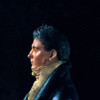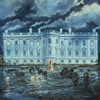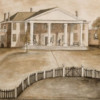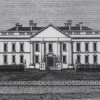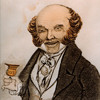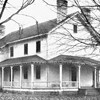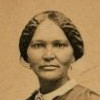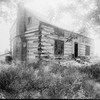Slavery in the President's Neighborhood
-
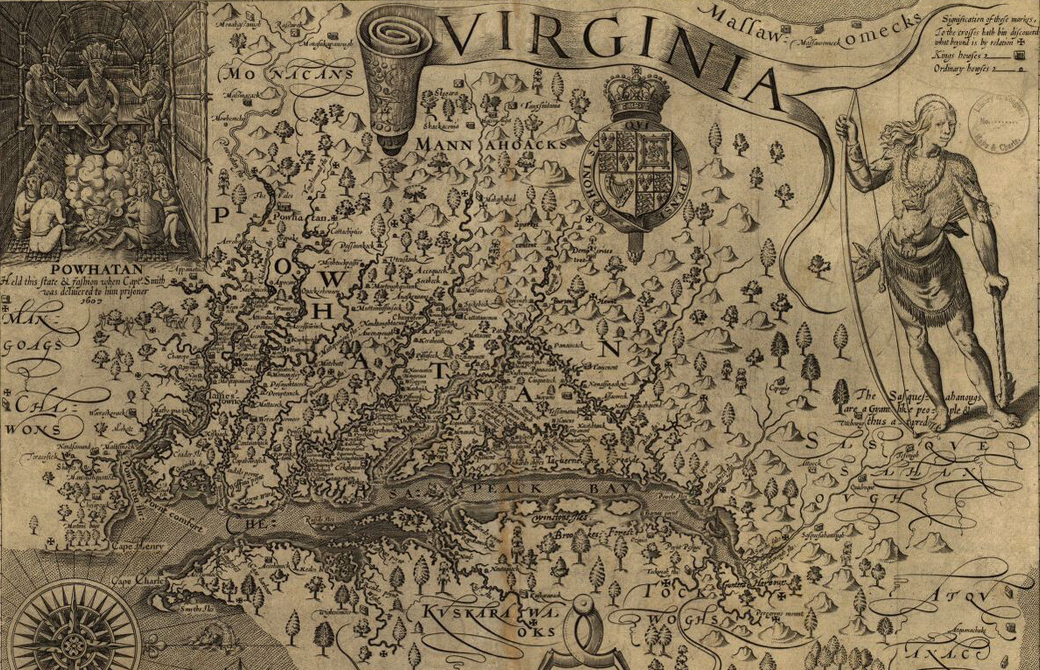
Slavery Before the White House
Tracing the stories of the indigenous and enslaved peoples who lived in the Potomac Valley prior to the construction of the Federal City.
Read more about Slavery Before the White House -
"20. and odd Negroes" brought to Jamestown.
slavery comes to the colonies
-
Massachusetts became the first colony to recognize slavery as a legal institution.
-
The first cargo ship with thirteen Africans arrived to the Maryland colony.
-
Seven Years War
-
The Revolutionary War
-
Declaration of Independence adopted by the Second Continental Congress.
-
Three-Fifths Compromise
-
Constitution signed at the Constitutional Convention.
-

Slavery was part of one-third of the first ladies' identities and lifestyles. These women benefitted from enslaved labor, and shared a more intimate relationship with slavery than their husbands, particularly managing enslaved servants within the home.
Read more about The First Ladies and Slavery -
The Residence Act, establishing the District of Columbia, was passed by Congress and signed into law by President George Washington.
-
The Remarkable Story of Ona Judge
Ona, an enslaved housemaid to Martha Washington, escaped after seven years.
Read more about The Remarkable Story of Ona Judge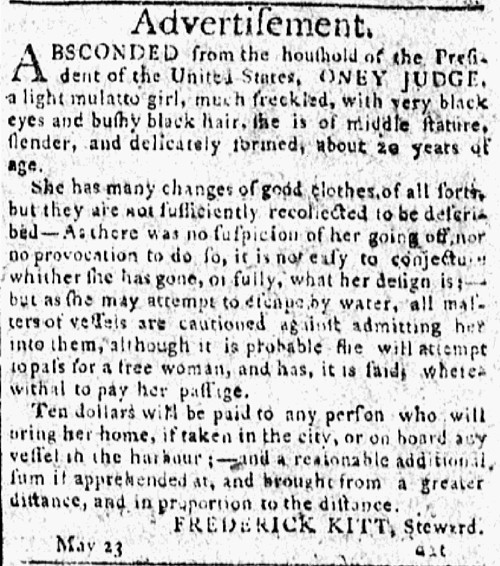
-

The Complexities of Slavery in the Nation's Capital
The city’s placement along the Potomac River, in between the slave states of Maryland and Virginia, ensured that slavery was ingrained into every aspect of life.
Read more about The Complexities of Slavery in the Nation's Capital -

Charles Willson Peale was a prominent American painter whose paintings hang in the White House. He also owned enslaved individuals including Moses Williams, who became an artist in his own right.
Read more about Charles Willson Peale -
Self-liberated slaves initiated the Haitian Revolution.
-
The black tobacco farmer who the presidents couldn't ignore.
Read more about Benjamin Banneker: Surveyor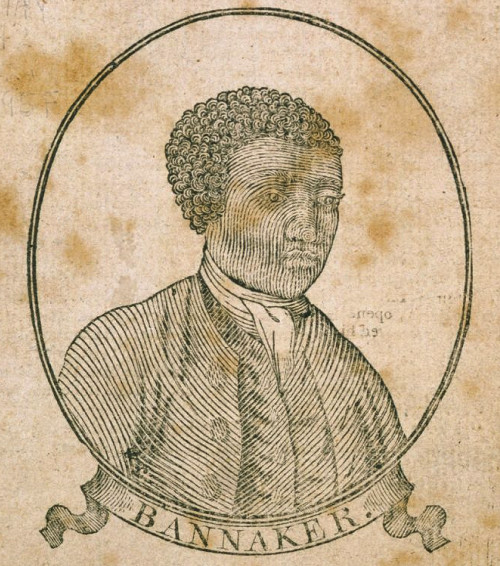
-
"I wake up every morning in a house that was built by slaves."
first lady michelle obama
Read more about first lady michelle obama -

Enslaved people were involved in every aspect of White House construction—from the quarrying of stone, to the cutting of timbers, to the production of bricks, to the physical labor of assembling its roof and walls.
Read more about Building the White House -
Enslaved Labor and the Construction of the U.S. Capitol
Although the U.S. Capitol is a symbol of freedom and democracy, enslaved laborers played a crucial role in the building's construction process.
Read more about Enslaved Labor and the Construction of the U.S. Capitol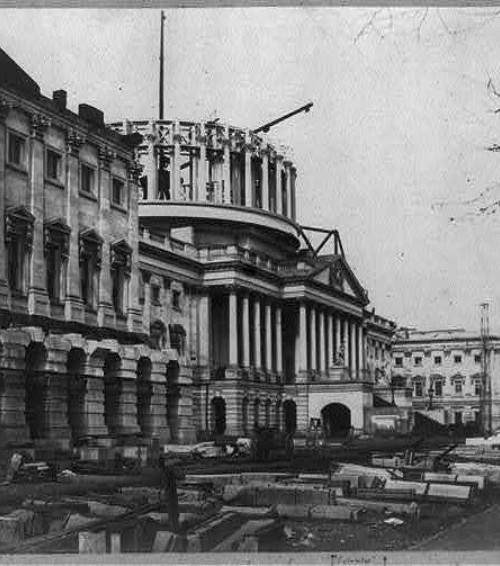
-
Sugar, Slavery, and the Washington China
A closer look at Martha Washington's 1796 sugar bowl illuminates many layers of history that span the Atlantic World and connect international merchants, enslaved laborers, American consumers, and a prominent first family.
Read more about Sugar, Slavery, and the Washington China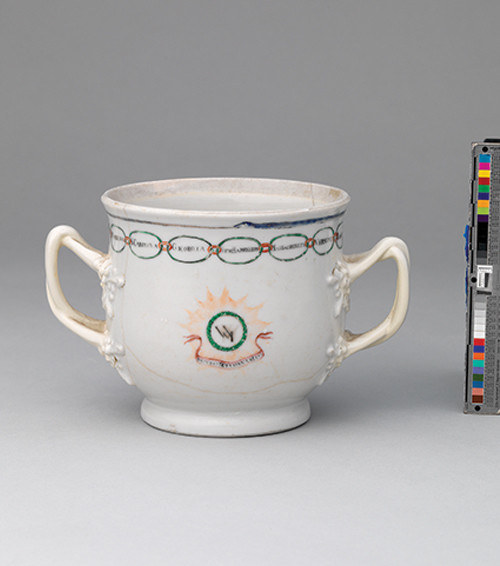
-
-
Congress enacted the Fugitive Slave Act.
-
“the Female I have none, but those I brought with me, except a Negro woman who is wholy with the Cook in the kitchin, and I am happy in not having any occasion for any others for a very sad set of creatures they are.”
First Lady Abigail Adams
-
Gabriel's Rebellion
-
John Adams became the first president to move into the White House.
-
Slavery and French Cuisine in the Jefferson White House
Thomas Jefferson employed French chefs to train enslaved members of the Monticello community in the delicate art of French cookery.
Read more about Slavery and French Cuisine in the Jefferson White House
-
The First Baptist Church of the City of Washington, D.C.
Enslaved persons made up a significant percentage of the church's membership, which also included white and free Black members. By 1839, many of the church’s enslaved and free Black members separated to form First Colored Baptist Church.
Read more about The First Baptist Church of the City of Washington, D.C.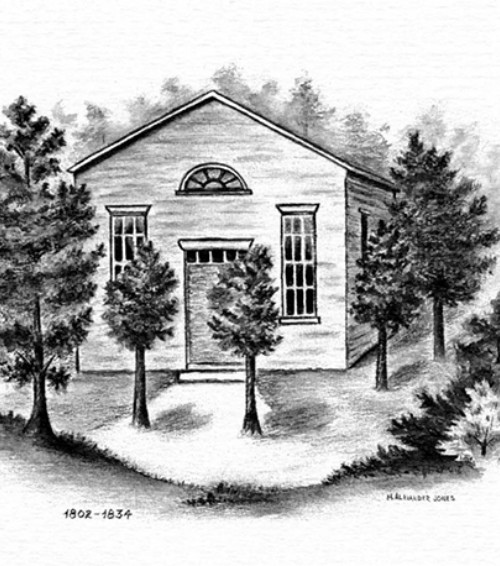
-
A law banning the African slave trade went into effect in the United States.
-
Paul Jennings: Slave, Freedman, and White House Memoirist
After serving as an enslaved valet in Madison’s White House, Jennings went on to write the first White House memoir, "A Colored Man’s Reminiscences of James Madison."
Read more about Paul Jennings: Slave, Freedman, and White House Memoirist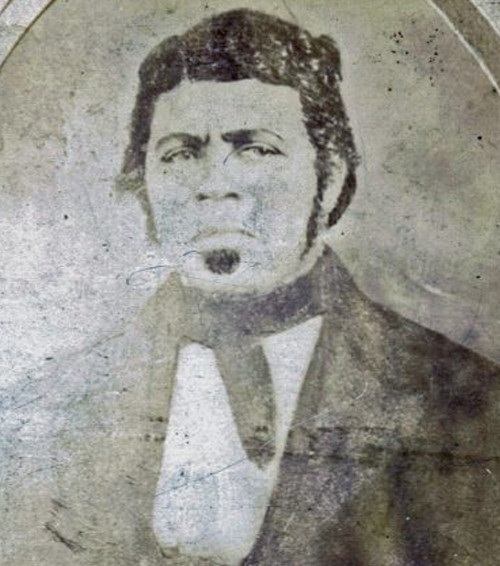
-
The War of 1812
-
Slavery, Freedom, and the Struggle to Keep a Family Together
John Freeman, an enslaved man working in the Jefferson White House, fell in love with Melinda Colbert, an enslaved woman in the household of the president's daughter.
Read more about Slavery, Freedom, and the Struggle to Keep a Family Together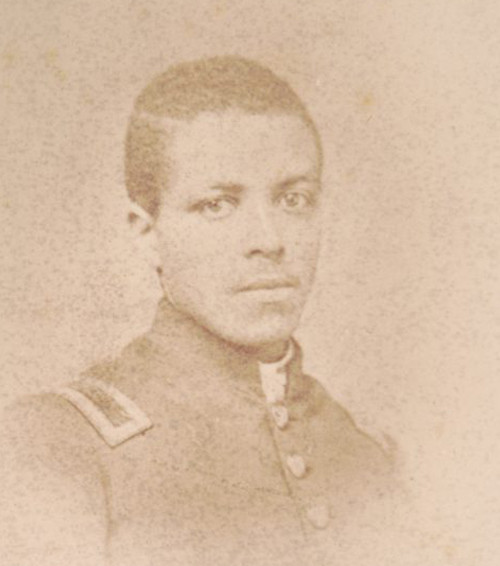
-
An Early Black Family's Life in Lafayette Park
In 1814, Lynch and Mary Wormley arrived in Washington, D.C. Their family would become an integral part of the President’s Neighborhood, fighting for their civil rights on a daily basis, while also owning and operating the prominent Wormley Hotel.
Read more about An Early Black Family's Life in Lafayette Park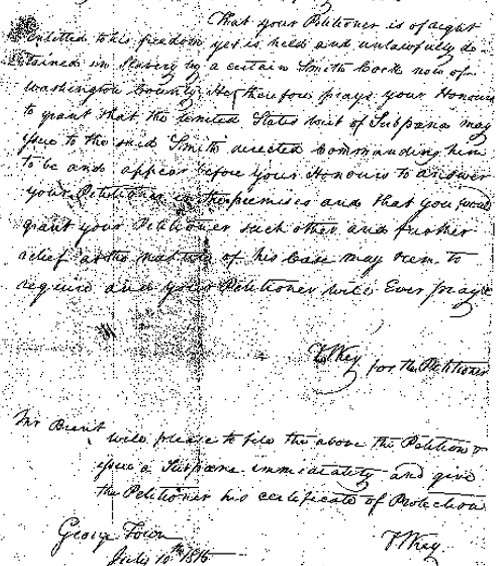
-
British troops entered Washington, D.C. and set fire to the White House, Capitol Building, Treasury, and the executive offices.
-
After the White House burned, the Madisons moved the presidential household to Octagon House, living there for six months. The home’s owner and one of Virginia’s largest slave owners, John Tayloe, also used enslaved labor at Octagon House.
Read more about Slavery at Octagon House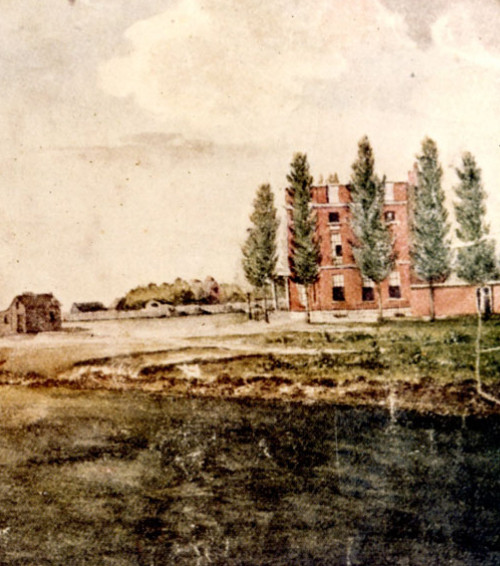
-
Construction began on the White House rebuild.
-
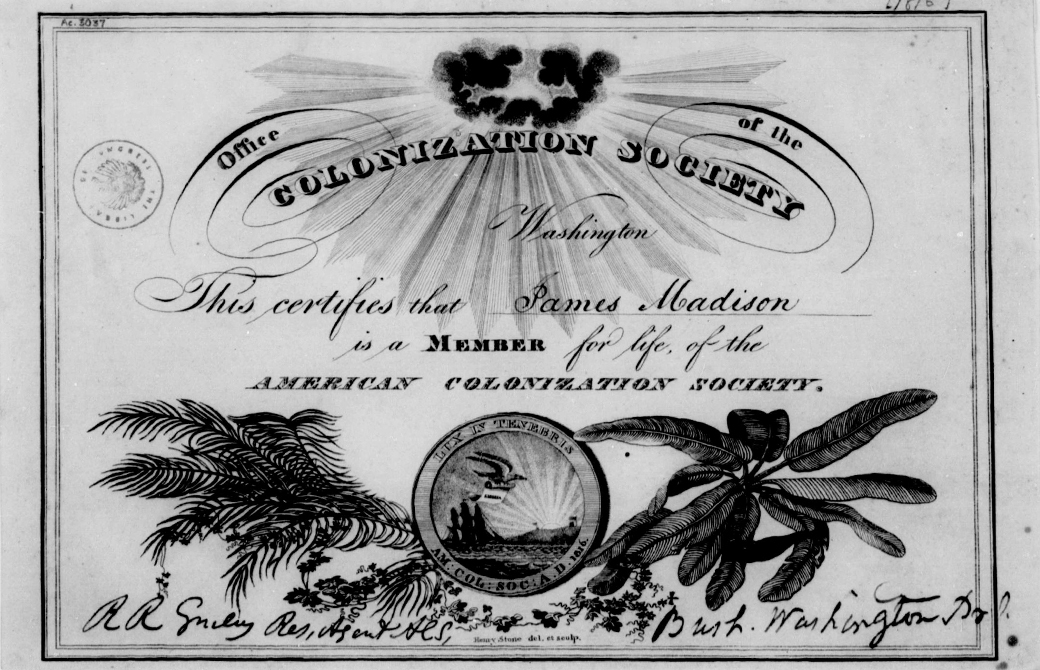
The American Colonization Society
In 1816, a group of white elites formed the American Colonization Society to send free African Americans to live in the new African colony of Liberia.
Read more about The American Colonization Society -
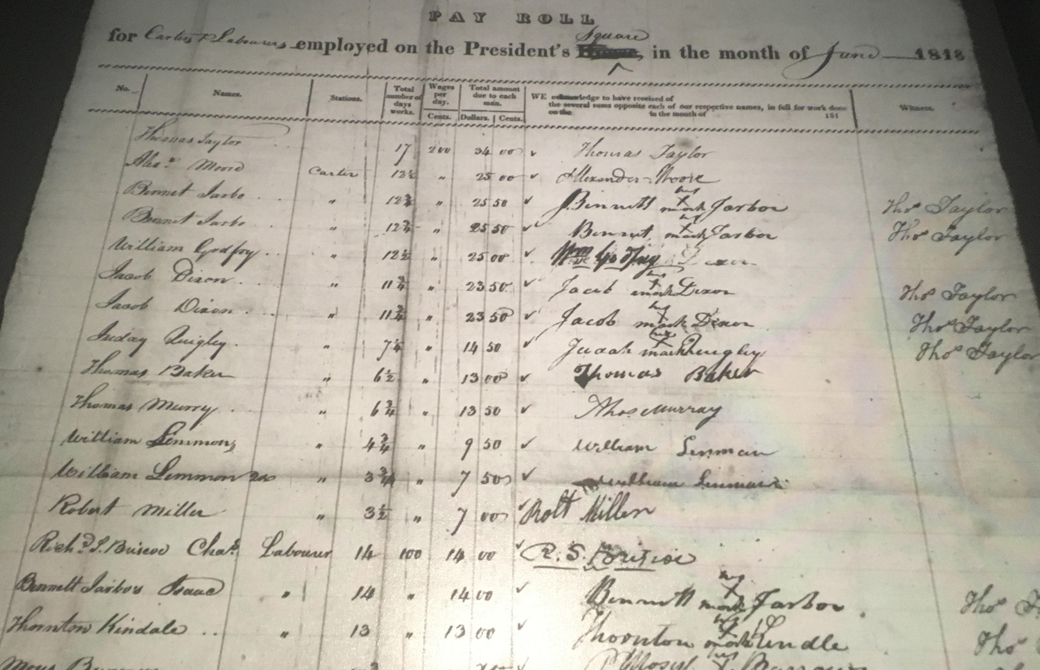
Enslaved Workers on the White House Grounds
In 1818, during the presidency of James Monroe, congressional appropriations designated money for landscaping and maintenance work on the White House Grounds. Enslaved labor was used for these projects.
Read more about Enslaved Workers on the White House Grounds -
Congress passed the Missouri Compromise.
-
A free African-American activist and scholar who successfully challenged Black Codes in the Circuit Court of the District of Columbia.
Read more about William Costin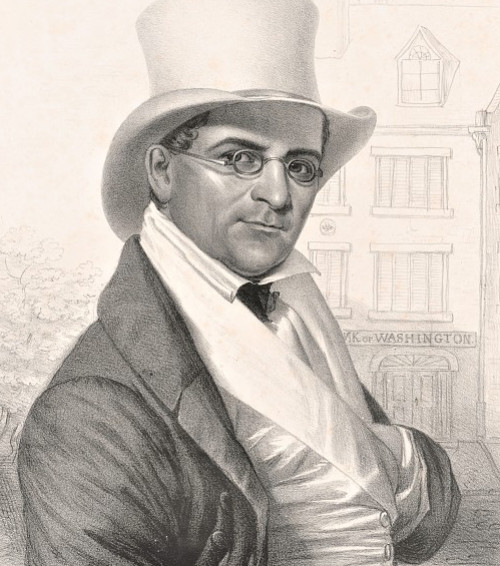
-
The Enslaved Household of Tench Ringgold
Tench Ringgold was a prominent slave owner in Washington, D.C. and his relationships with those in power led to a close friendship with President James Monroe. According to the 1820 census, the Ringgold household enslaved around twenty-nine people.
Read more about The Enslaved Household of Tench Ringgold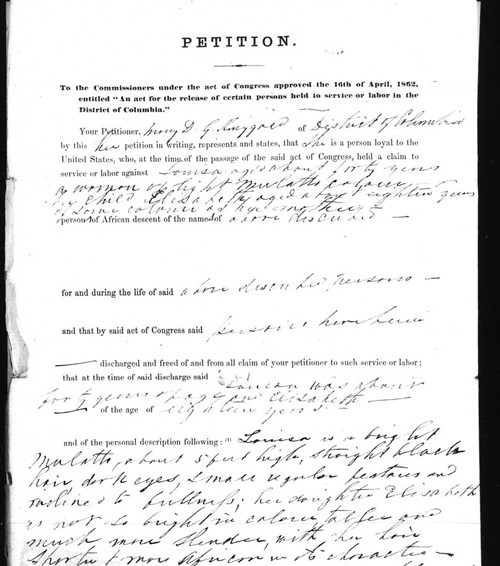
-
Charlotte Dupee’s Suit for Freedom in Early Washington, D.C.
While living at Decatur House, Charlotte Dupuy/Dupee, a woman enslaved by Henry Clay for nearly twenty-three years, sued the powerful statesmen for her freedom and the freedom of her children.
Read more about Charlotte Dupee’s Suit for Freedom in Early Washington, D.C.
-
Peter Marks' White House Story
Peter Marks is the only known individual to be freed by President James Monroe. After being freed, Peter Marks and his wife, Eugenia Hemings, who was formerly enslaved by the Jefferson family, settled in Philadelphia to work and raise their family.
Read more about Peter Marks' White House Story
-
Enslaved Virginians sparked the deadliest revolt in U.S. history in Nat Turner’s Rebellion.
-

The Slave Quarters at Decatur House
Secretary of State Henry Clay was the first occupant to bring enslaved people to Decatur House.
Read more about The Slave Quarters at Decatur House -
Andrew Jackson gave his son’s bride a wedding present—an enslaved woman named Gracy Bradley. Bradley worked in the White House before returning to The Hermitage, where she lived the rest of her life with her husband, Alfred Jackson.
Read more about Gracy Bradley’s White House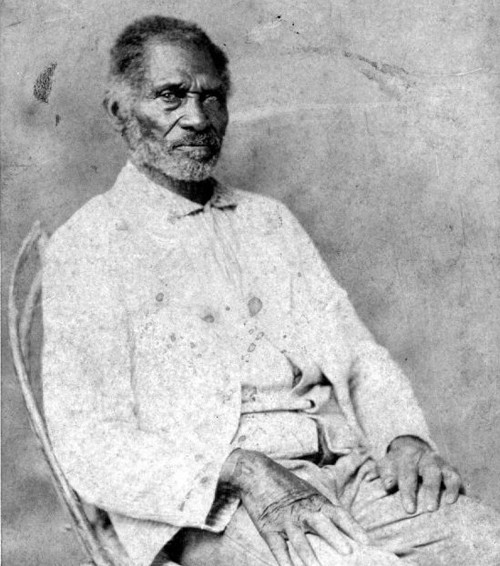
-
Mobs of white citizens targeted Washington’s free black community in the Snow Riot.
-
The House of Representatives passed a series of resolutions called “the gag rule,” barring discussion of slavery.
-
John Gadsby: Hotelier & Slave Owner in the President’s Neighborhood
For nearly four decades until 1836, John Gadsby was the premier hotelier in Alexandria, Baltimore, and Washington, D.C. He relied on dozens of enslaved individuals to manage these establishments.
Read more about John Gadsby: Hotelier & Slave Owner in the President’s Neighborhood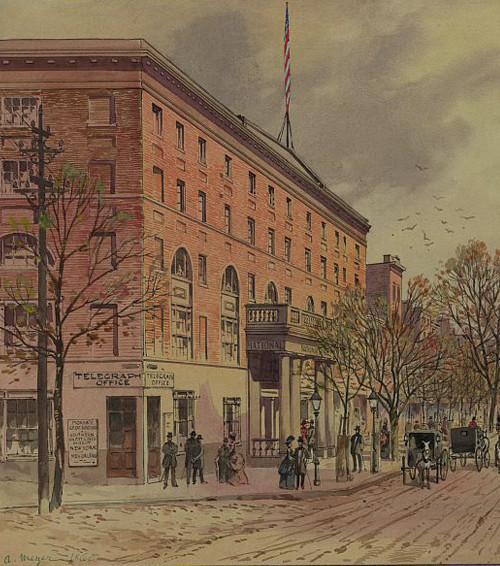
-
The Yellow House Jail—Washington’s Most Notorious Slave Pen
William H. Williams’ infamous private slave jail, dubbed the Yellow House, was located just south of the National Mall, on the block bounded by Seventh and Eighth streets, and by B Street and Maryland Avenue.
Read more about The Yellow House Jail—Washington’s Most Notorious Slave Pen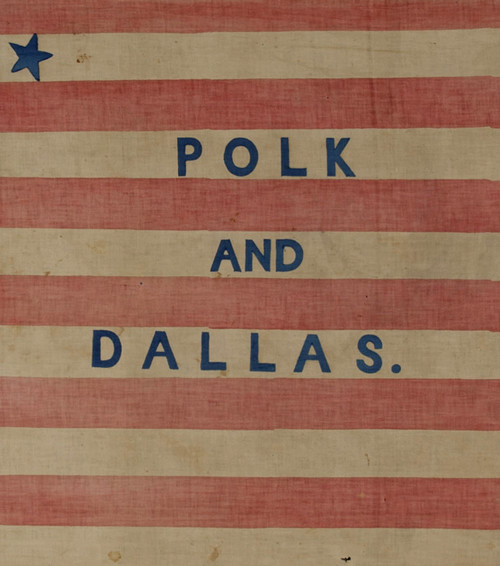
-
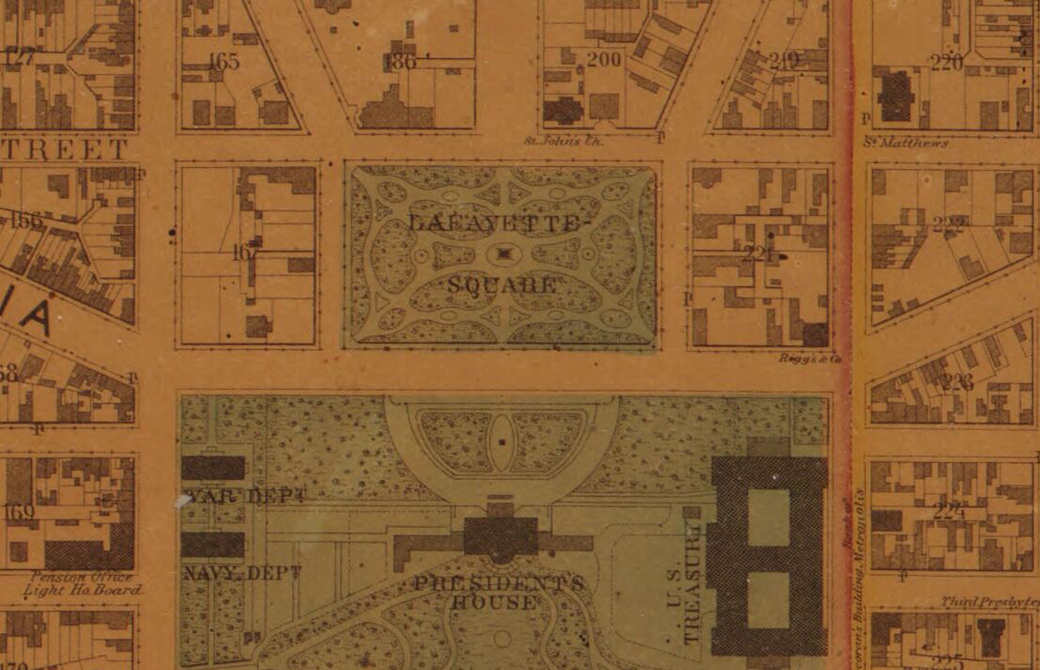
The President's Neighborhood Expands
This map of Washington, D.C. from 1857 shows a number of government buildings in the President's Neighborhood. It also shows nearby homes where enslaved people lived, including the Decatur House, the Blair House, and the Cutts-Madison House.
-
The Supreme Court ruled on United States v. The Amistad.
-
President William Henry Harrison moved into the White House.
-
In the limited research of President William Henry Harrison’s famously brief presidency, sources reveal a fascinating individual who worked in the Harrison White House: George DeBaptiste, valet to the president and conductor on the Underground Railroad.
Read more about George DeBaptiste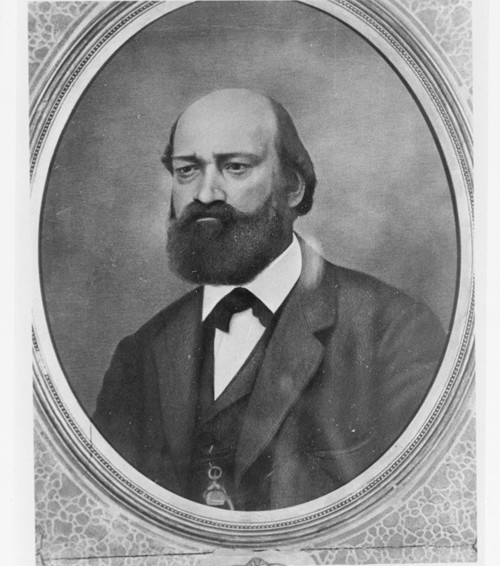
-
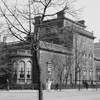
Daniel Webster, Secretary of State for Presidents William Henry Harrison and John Tyler, lived on Lafayette Square from 1841-1846. He would purchase the freedom of enslaved individuals and in return, they would work for him until their debt was paid off.
Read more about Daniel Webster's House -
Slave Patrols in the President's Neighborhood
Colonial slave codes shaped early policing in Washington, using violence to control enslaved peoples’ movements. The establishment of the Auxiliary Guard in 1842 following protests at the White House formalized these slave patrol practices.
Read more about Slave Patrols in the President's Neighborhood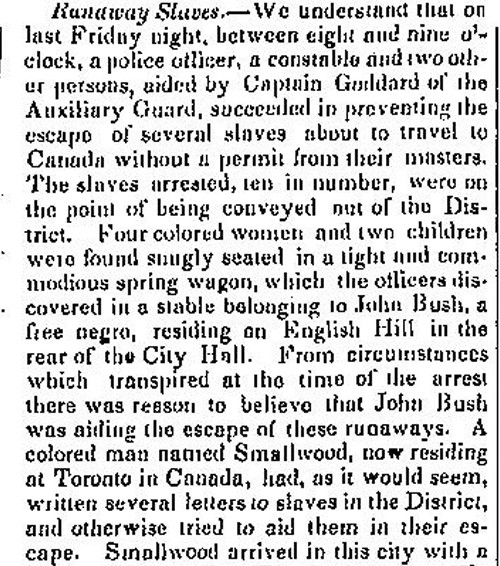
-
Robbery at the Tyler White House
According to this newspaper article, “a colored woman named Mary Murphy” was “charged with stealing silver table and teaspoons.” The report also mentioned that “a colored servant belonging to the President is also implicated in this theft.”
Read more about Robbery at the Tyler White House
-
From the White House to Freedom on the Underground Railroad
The story of James Hambleton Christian in William Still's book "The Underground Railroad."
Read more about From the White House to Freedom on the Underground Railroad
-
The Mexican-American War
-
Enslaved and Entrenched: The Complex Life of Elias Polk
While his enslaved status prevented him from directly participating in conversations, Elias witnessed the turbulence of nineteenth-century politics up close.
Read more about Enslaved and Entrenched: The Complex Life of Elias Polk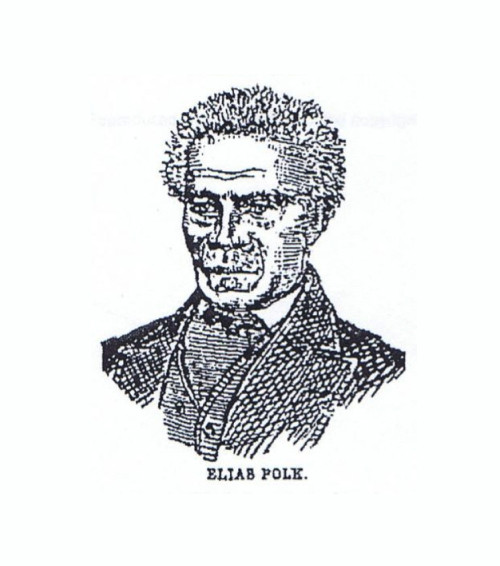
-
Born into slavery on a Mississippi planation around 1831, Henry Carter, Jr. and his parents Henry, Sr. and Mariah, were owned by James K. Polk. Henry, Jr. became a butler for the Polks, moving to Tennessee and later the White House.
Read more about Plantations and Politics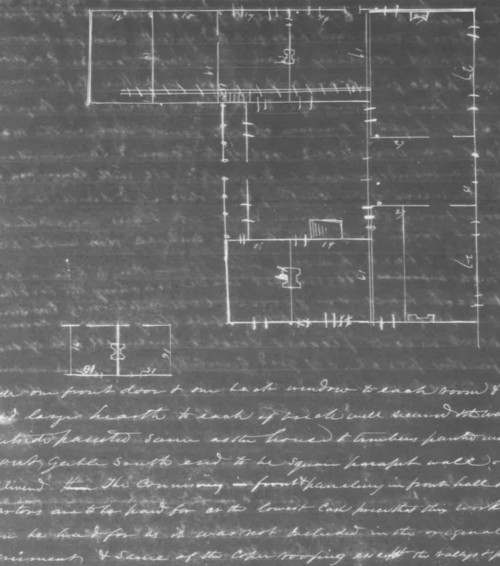
-
Washington, D.C. retroceded Alexandria back to Virginia.
-

"Running from the Temple of Liberty": The Pearl Incident
In April 1848, residents of Washington, D.C. witnessed the largest attempted slave escape in American history. In the early morning hours on April 15, seventy-seven enslaved people climbed aboard The Pearl, a schooner owned by Daniel Drayton.
Read more about "Running from the Temple of Liberty": The Pearl Incident -
President Taylor’s Plantation
A depiction of one of Zachary Taylor’s plantations. Taylor owned multiple plantations in Mississippi and another in Baton Rouge, Louisiana. During his presidency, he continued to own and operate his Cypress Grove plantation in Mississippi.

-
Congress enacted legislation forming the Compromise of 1850.
-
Congress passed a strengthened Fugitive Slave Act.
-
President Millard Fillmore moved into the White House.
-
Phillip Reed, Enslaved Artisan in the President's Neighborhood
In 1853, sculptor Clark Mills unveiled his statue of Andrew Jackson in Lafayette Park, but the artistic contributions of Mills’s enslaved apprentice, Philip Reed, have been largely ignored.
Read more about Phillip Reed, Enslaved Artisan in the President's Neighborhood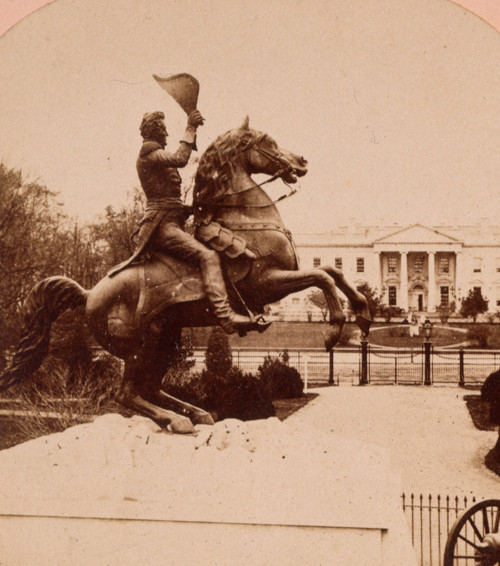
-
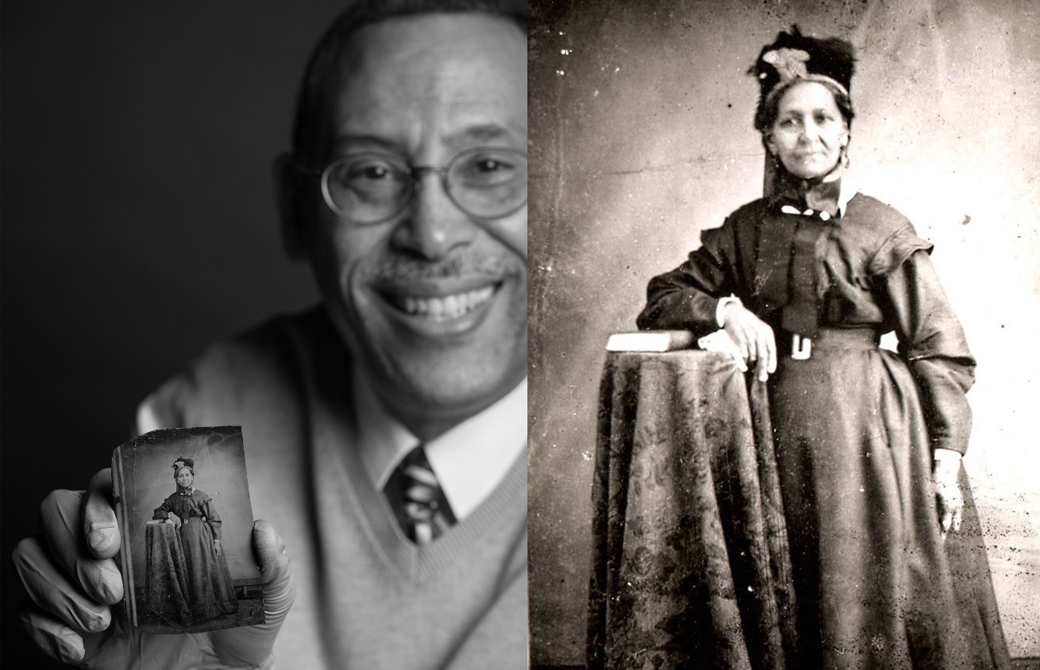
Nancy Syphax – Life and Legacy
Nancy Syphax worked as an enslaved house servant at Decatur House for John Gadsby, and his daughter Augusta McBlair. Nancy was freed by the Washington, D.C. Compensated Emancipation Act of 1862 but continued to work in her former enslaver’s household.
Read more about Nancy Syphax – Life and Legacy -
President Franklin Pierce moved into the White House.
-
Congress passed the Kansas-Nebraska Act, repealing the 1820 Missouri Compromise.
-
The Supreme Court ruled on Dred Scott v. Sanford.
-
Harriet and Dred Scott and Their Children
The Supreme Court ruled that the Scotts were not entitled to their freedom under the United States Constitution. Their case became one of the rallying cries of the abolitionist movement in the lead-up to the Civil War.
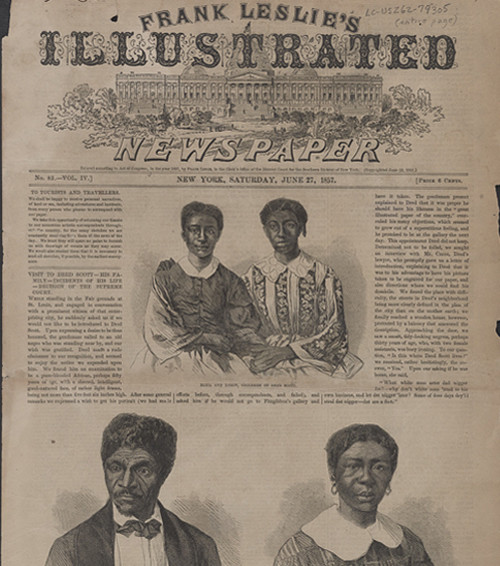
-
John Brown led raid on Harpers Ferry.
-
From Slavery to the White House: The Extraordinary Life of Elizabeth Keckly
Elizabeth Hobbs Keckly was born into slavery. After purchasing her own freedom, she moved to Washington, D.C. and became First Lady Mary Lincoln’s dressmaker, eventually publishing a memoir about her life and friendship with Mrs. Lincoln.
Read more about From Slavery to the White House: The Extraordinary Life of Elizabeth Keckly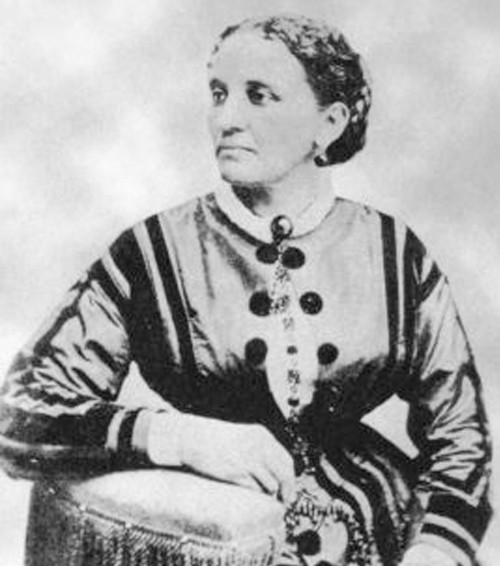
-
Civil War
-
Washington, D.C.'s "Contraband" Camps
In April 1862, Congress passed the Compensated Emancipation Act, ending slavery in Washington, D.C. Formerly enslaved refugees were welcomed into "Contraband" Camps with abysmal conditions, which President Lincoln donated to improve throughout the war.
Read more about Washington, D.C.'s "Contraband" Camps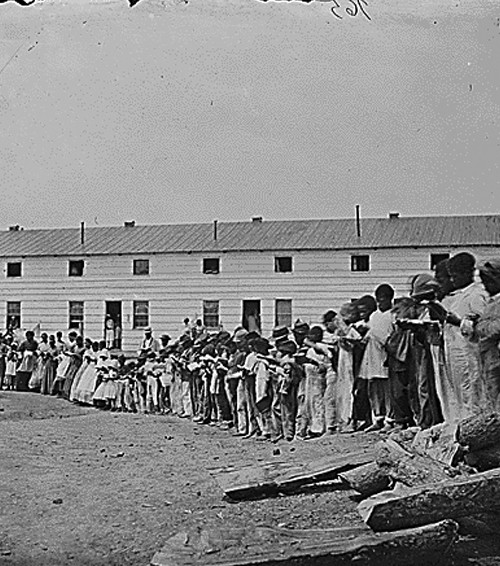
-
Congress established Emancipation Day in Washington, D.C.
-
Frederick Douglass and Abraham Lincoln
Frederick Douglass and Abraham Lincoln shared a tumultuous relationship during the Lincoln presidency, but in the end, Douglass taught Lincoln many lessons about racial equality and the importance of actions, rather than words.
Read more about Frederick Douglass and Abraham Lincoln
-
Maria and Keziah Williams were the matriarchs of their families. Enslaved by hotelier John Gadsby, they were brought to Washington to work in his lodging establishments and later Decatur House. Sadly, they were separated from each other during the 1850s.
Read more about The Williams Family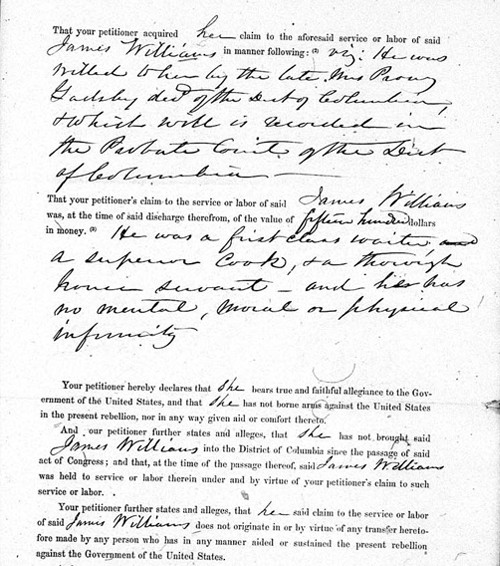
-
Abraham Lincoln issued the Emancipation Proclamation.
-
Abraham Lincoln assassinated.
-
William Johnson—Formerly Enslaved by President Andrew Johnson
William Johnson became nationally recognized as the last surviving individual to be formerly enslaved by a U.S. president. He was invited to the White House to meet President Franklin Roosevelt in 1937. He is pictured here at the U. S. Capitol Building.
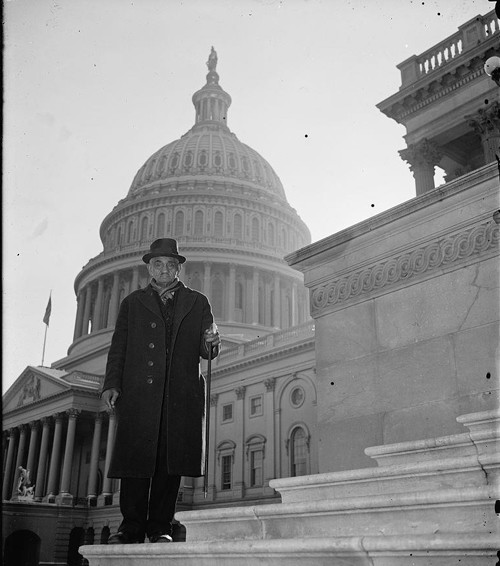
-
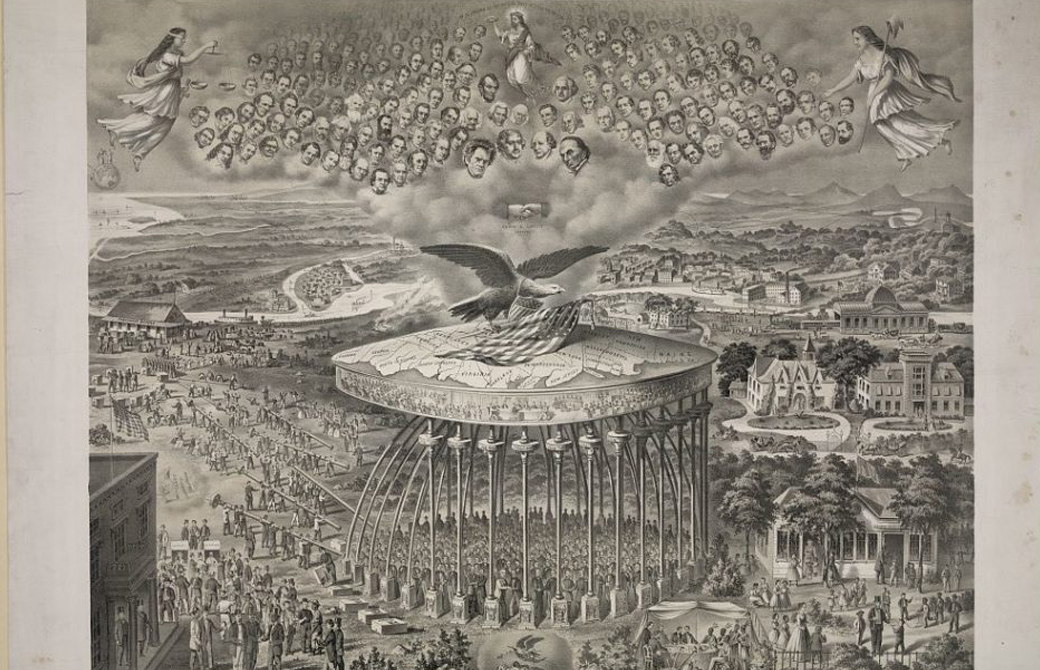
The White House and Reconstruction
During and following the Civil War, the United States faced the task of piecing the war-torn nation back together, included grappling with the end of slavery. Over the course of fourteen years, three presidents worked to reconcile and rebuild the country.
Read more about The White House and Reconstruction -
Ratification of the Thirteenth Amendment.
-
“The parades as they passed by the White House were reviewed by the President [Benjamin Harrison] and all the members of the cabinet.”
The African-American community in Washington, D.C. commemorated Emancipation Day from 1866-1901 with parades and celebrations.
Read more about The African-American community in Washington, D.C. commemorated Emancipation Day from 1866-1901 with parades and celebrations. -
Ratification of the Fourteenth Amendment.
-
Ratification of the Fifteenth Amendment.
Additional Resources
Interested in Contacting Us?
Research into the enslaved individuals that built, lived, and worked in the White House is ongoing. If you have information you would like to share, please get in touch with us.
Contact Us
